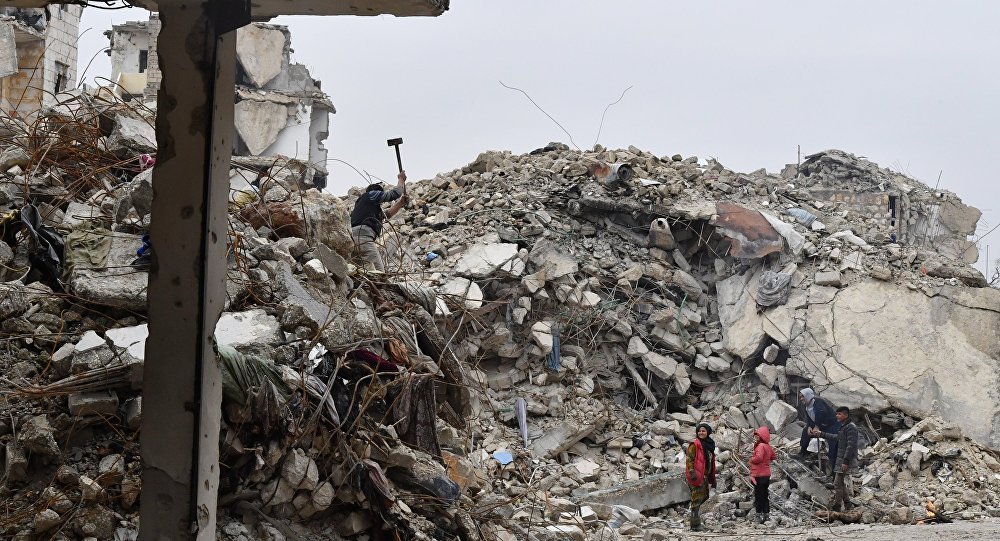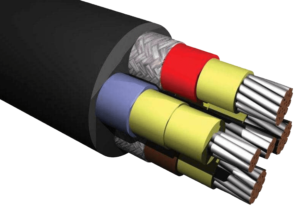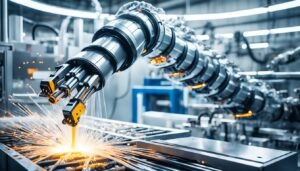Programs on what to do with plastic waste generated after the war
In the conflict between Ukraine and Russia, plastic waste is also a significant problem. The main sources of plastic waste include the following aspects:
- Consumer Product Packaging: During wartime, people may rely on portable and disposable plastic packaging for food and beverages, generating a large amount of plastic waste.
- Temporary Housing and Shelters: During the war, temporary housing and shelters may use substantial amounts of plastic materials, such as plastic tarps and plastic bags.
- Medical Waste: The medical treatment activities during the war will produce a large amount of disposable plastic products, such as syringes, gloves, and packaging materials.
- Military Supplies: The packaging and transportation of military supplies also use a lot of plastic, such as plastic trays and packaging films.
How to sort plastic waste well after the war
In conflict or disaster areas, sorting plastic waste can follow these steps to improve efficiency and environmental impact:
- Establish Sorting Standards: First, it is necessary to determine which plastics can be recycled and which require special treatment. Commonly recyclable plastics include PET (Polyethylene Terephthalate, commonly used for beverage bottles), HDPE (High-Density Polyethylene, used for detergent bottles and plastic bags), and PP (Polypropylene, used for utensils and some packaging materials).
- Awareness and Education: Conduct awareness and education campaigns within the community to inform residents and relevant personnel on how to properly sort plastic waste, explaining the importance of sorting and the specific methods involved.
- Set Up Sorting Stations: Establish sorting stations in locations accessible to residents and rescue personnel, clearly marking different types of plastic recycling bins. For example, separate bins for PET plastics, HDPE plastics, and other plastics can be set up.
- Regular Cleanup and Transportation: Arrange regular clean-up and transport of plastic waste to recycling centers. Ensure that the recycling stations do not accumulate excessive amounts of plastic waste, preventing environmental pollution.
- Collaboration and Support: Collaborate with local governments, environmental organizations, and international aid agencies to obtain technical and financial support, improving the recycling rate and processing efficiency of plastic waste.
- Innovation and Technology Utilization: Use modern technology, such as smart sorting bins, which can automatically identify and sort types of plastic, reducing the need for manual sorting and increasing efficiency.
These are recommended general sorting methods. For more precise sorting, specialized techniques are needed, such as collecting a specific product type and analyzing whether it can be remade into plastic pellets.
How plastic waste is regenerated into new plastic pellets
1. Collection and Sorting
- Collection: First, plastic waste needs to be collected. This is usually done through municipal recycling programs, recycling centers, or specialized recycling businesses.
- Sorting: After collection, the plastics need to be thoroughly cleaned and sorted. Different types of plastics (such as PET, HDPE, PVC, etc.) need to be processed separately because each type of plastic has different melting points and recycling methods.
2. Cleaning
- Cleaning the plastics is an essential step to remove grease, food residues, and other contaminants. This step ensures the quality of the recycled plastic and prevents contamination of the new products being made.
3. Shredding
- Cleaned plastics are shredded into small pieces or flakes. This process usually involves a powerful shredder that can handle large items like plastic bottles or containers and reduce them to smaller fragments.
4. Melting and Extrusion
- Melting: The shredded plastic pieces are heated and melted. The melting must be performed at controlled temperatures to accommodate different plastic properties.
- Extrusion: The melted plastic is extruded through an extrusion machine. During this process, the plastic is pushed through a die that shapes it, usually into long strands.
5. Pelletizing
- The extruded plastic strands are cooled and then cut into small pellets. These pellets are the recycled plastic granules that can be sold to plastic product manufacturers to be used in producing various new plastic products.
6. Packaging and Distribution
- After quality inspection, the recycled plastic pellets are packaged and transported to manufacturers or the market to be used in the production of various new plastic products, such as plastic bags, bottles, household utensils, etc.
This recycling process helps reduce the demand for new raw materials and alleviates the burden on landfill sites, promoting environmental conservation. By continuously optimizing this process, the efficiency and quality of plastic recycling can be improved, further advancing sustainable development goals.
Plastic Recycling Machine Recommendation
All-round take you to understand the most advanced plastic recycling machine in 2024, it will bring you a different experience.
Recommended use of JianTai small plastic recycling machines: innovative solutions for plastic waste management
Globally, plastic pollution has become an increasingly severe environmental issue. The massive accumulation of plastic waste has placed a significant burden on land, water bodies, and marine ecosystems. Against this backdrop, effective management of plastic waste is crucial. Addressing this issue, JianTai has introduced a compact plastic recycling machine, providing an efficient and feasible solution for small-scale plastic waste recycling.
Product Overview
The JianTai compact plastic recycling machine is designed specifically for small businesses, communities, and educational institutions. Its straightforward design and easy operation make it suitable for users without extensive experience in operating large machinery. This machine can process various types of plastics, including common materials like PET, HDPE, and PP, transforming discarded plastics into usable raw materials or new plastic products.
Core Technology and Features
The JianTai machine utilizes advanced melting technology to efficiently process plastic waste with low energy consumption. A built-in temperature control system ensures the safety and efficiency of the process. Additionally, it is equipped with smart sensors that automatically identify the type of plastic and adjust the processing program, ensuring optimal recycling of plastics.
Environmental Impact
Using the JianTai compact plastic recycling machine not only reduces plastic waste in the environment but also decreases reliance on new plastics, thereby reducing the consumption of non-renewable resources such as oil. This method of reducing plastic production from the source helps alleviate environmental pressure and promotes sustainable development.
Social and Economic Benefits
Furthermore, the widespread use of the JianTai compact plastic recycling machine can bring significant social and economic benefits. It provides a self-sufficient method for small communities to handle plastic waste, enhancing their autonomy and potentially creating new job opportunities. Community residents can operate this machine to convert discarded plastics into profit, making everyday items, artworks, and more.













